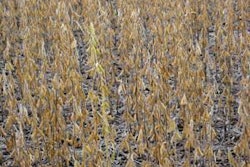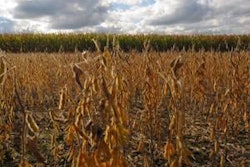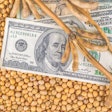Food markets are more stable and prices for most agricultural commodities are sharply lower than they have been in recent years, according to the latest edition of FAO‘s biannual Food Outlook report and a new update to the organization’s monthly Food Price Index.
Bumper harvests and abundant stockpiles are key factors helping drive down international cereal prices, according to the report.
World wheat production in 2014 is forecast to reach a new record, it says.
For coarse grains, prospects for near-record production levels, combined with already-high inventories point to a very comfortable world supply and demand balance in 2014-15, especially for maize.
While rice outputs could decline slightly this year, stockpiles remain “huge” and are sufficient to cover more than one-third of projected consumption during the 2015-16 period.
All told, world cereal production in 2014 is anticipated to reach 2.5 billion tons — an upward revision from FAO’s initial forecast in May. World cereal stocks should hit their highest level in 15 years by the end of the cropping season in 2015.
Global output of oilseeds is also forecast to exceed last season’s record due to further expansion of soybean production.
Meanwhile, world production of cassava looks to be on track to achieving another record high, driven by sustained growth in Africa, where the tuber is a strategic crop for food security and poverty alleviation.
Food Outlook anticipates that world sugar production will increase in 2015-16, as well.
Meat production is set to grow moderately in 2014, but not enough to ease prices from their current high levels, while milk production continues to grow steadily in many countries.
Production of fish is also on the rise, driven largely by aquaculture and less-than-expected El Niño impacts.
Price drops across the board – almost
The FAO Food Price Index (FPI) has registered its sixth consecutive monthly drop — the longest period of continuous decline in the value of the index since the late 1990s — averaging 191.5 points in September 2014.
Among the FPI sub-indices, sugar and dairy fell most sharply, followed by cereals and oils, while meat remained firm.
Although meat prices remain high they could be stabilizing: the September Meat Price index remains 22 points up versus the same time last year, a historic high, but registered only a slight increase over August (0.3 of a point) after months of steady hikes.
High meat prices and large trade volumes for products in the animal protein category, including meat, dairy and fish, mean that the global food import bill — that is, the aggregate amount that all countries spend on imported foodstuffs — will surpass $1 trillion again this year, for the fifth year in a row.
The FAO FPI is a trade-weighted index that measures prices of five major food commodities on international markets.















